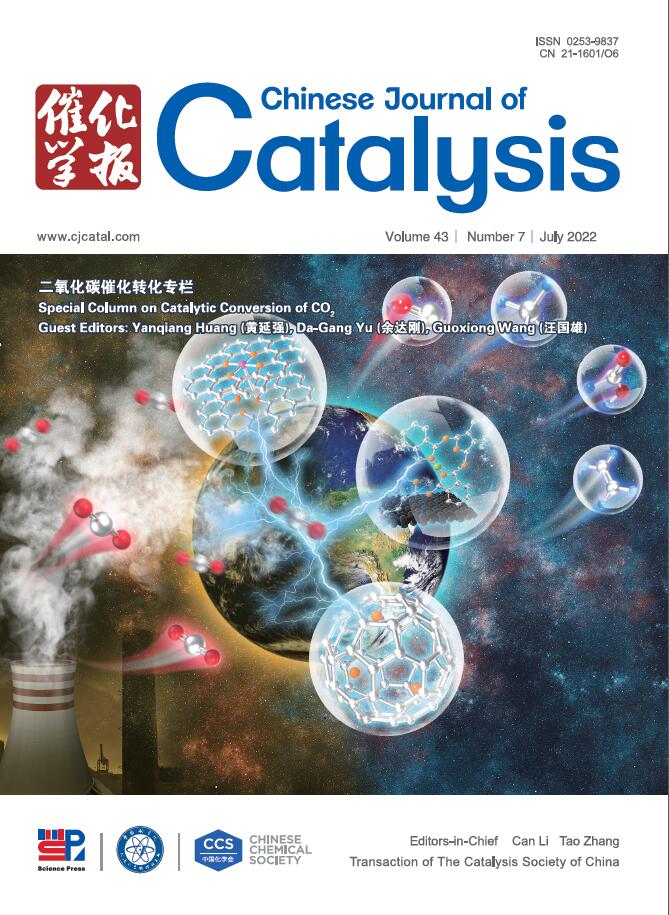Efficient nitrate electroreduction to ammonia via synergistic cascade catalysis at Cu/Fe2O3 hetero-interfaces
IF 15.7
1区 化学
Q1 CHEMISTRY, APPLIED
引用次数: 0
Abstract
ABSTRACT
Electrochemical nitrate (NO3−) reduction offers a promising route for ammonia (NH3) synthesis from industrial wastewater using renewable energy. However, achieving selective and active NO3− to NH3 conversion at low potentials remains challenging due to complex multi-electron transfer processes and competing reactions. Herein, we tackle this challenge by developing a cascade catalysis approach using synergistic active sites at Cu-Fe2O3 interfaces, significantly reducing the NO3− to NH3 at a low onset potential to about +0.4 VRHE. Specifically, Cu optimizes *NO3 adsorption, facilitating NO3− to nitrite (NO2−) conversion, while adjacent Fe species in Fe2O3 promote the subsequent NO2− reduction to NH3 with favorable *NO2 adsorption. Electrochemical operating experiments, in situ Raman spectroscopy, and in situ infrared spectroscopy consolidate this improved onset potential and reduction kinetics via cascade catalysis. An NH3 partial current density of ~423 mA cm−2 and an NH3 Faradaic efficiency (FENH3) of 99.4% were achieved at −0.6 VRHE, with a maximum NH3 production rate of 2.71 mmol h−1 cm−2 at −0.8 VRHE. Remarkably, the half-cell energy efficiency exceeded 35% at −0.27 VRHE (80% iR corrected), maintaining an FENH3 above 90% across a wide range of NO3− concentrations (0.05−1 mol L−1). Using 15N isotopic tracing, we confirmed NO3− as the sole nitrogen source and attained a 98% NO3− removal efficiency. The catalyst exhibit stability over 106-h of continuous operation without noticeable degradation. This work highlights distinctive active sites in Cu-Fe2O3 for promoting the cascade NO3− to NO2− and NO2− to NH3 electrolysis at industrial relevant current densities.
求助全文
约1分钟内获得全文
求助全文
来源期刊

Chinese Journal of Catalysis
工程技术-工程:化工
CiteScore
25.80
自引率
10.30%
发文量
235
审稿时长
1.2 months
期刊介绍:
The journal covers a broad scope, encompassing new trends in catalysis for applications in energy production, environmental protection, and the preparation of materials, petroleum chemicals, and fine chemicals. It explores the scientific foundation for preparing and activating catalysts of commercial interest, emphasizing representative models.The focus includes spectroscopic methods for structural characterization, especially in situ techniques, as well as new theoretical methods with practical impact in catalysis and catalytic reactions.The journal delves into the relationship between homogeneous and heterogeneous catalysis and includes theoretical studies on the structure and reactivity of catalysts.Additionally, contributions on photocatalysis, biocatalysis, surface science, and catalysis-related chemical kinetics are welcomed.
 求助内容:
求助内容: 应助结果提醒方式:
应助结果提醒方式:


